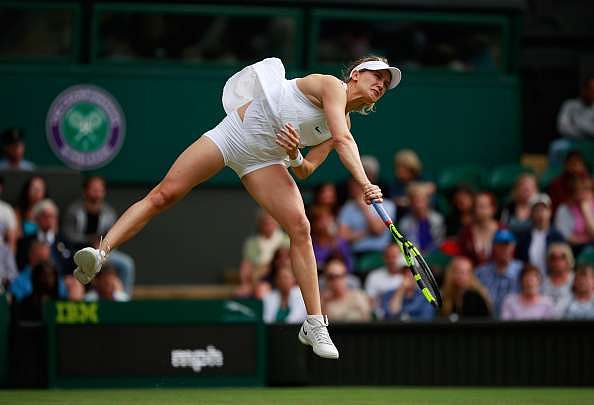
Nike recalls women's dresses from Wimbledon: The All England club and its all white dress code
Nike has recalled dresses that were supposed to be worn by 20 of its sponsored women players at Wimbledon after raging complaints against them being too skimpy. Alhough the dresses did pass the thorough Wimbledon rules, the players complained of them jumping over the waistline and thus revealing too much.
This is one of the few occasions where the players have asked for a change rather than the All England Club.
Wimbledon is widely regarded as one of the most prestigious sports events in the world, one that has reached an iconic status and is a favourite among fans who come in hordes every year to watch the oldest of the four Grand Slams which takes places at the All England Club in London during the English Summer.
There are certain things which have become an indispensable part of Wimbledon, like strawberries and cream and the all-white dress code. Yes, the all-white dress code is one of the strictest dress codes anywhere, and can be considered stricter than the dress code rules that were followed in our schools.
The rules state that players must be entirely dressed in almost all whites, and can face dire consequences like disqualification from the referee if they don’t comply by the rule. Many of tennis’ greats have had to face problems and were at the receiving end due to this rule, but how did this rule come about?
How did the all-white rule become a part of Wimbledon?
The history of wearing whites at Wimbledon can be traced back to the 1800s, when tennis was a sport played primarily by women in social gatherings. To avoid the embarrassment of the sight of sweaty patches on coloured clothing, which was considered inappropriate, the dress code was changed to white. The All England Club introduced Lawn Tennis in 1875, and this practice was still common during those days.
What exactly do the rules say?
The official website of the Wimbledon specify the exact rules that are to be followed by the players on the court when it comes to their clothing and equipment. Competitors must be dressed in suitable tennis attire that is almost entirely white and this applies from the point at which the player enters the court surround. White does not include off white or cream.
There should be no solid mass or panel of colouring. A single trim of colour around the neckline and around the cuff of the sleeve is acceptable but must be no wider than one centimetre (10mm). Colour contained within patterns will be measured as if it is a solid mass of colour and should be within the one centimetre (10mm) guide. Logos formed by variations of material or patterns are not acceptable.
The back of a shirt, dress, tracksuit top or sweater must be totally white. Shorts, skirts and tracksuit bottoms must be totally white except for a single trim of colour down the outside seam no wider than one centimetre (10mm). Caps, headbands, bandanas, wristbands and socks must be totally white except for a single trim of colour no wider than one centimetre (10mm).
Shoes must be almost entirely white, including the soles. Large manufacturers’ logos are not encouraged. The grass court shoes must adhere to the Grand Slam rules. In particular shoes with pimples around the outside of the toes shall not be permitted. The foxing around the toes must be smooth.
Any undergarments that either are or can be visible during play (including due to perspiration) must also be completely white except for a single trim of colour no wider than one centimetre (10mm). In addition, common standards of decency are required at all times. Medical supports and equipment should be white if possible but may be coloured if absolutely necessary.
